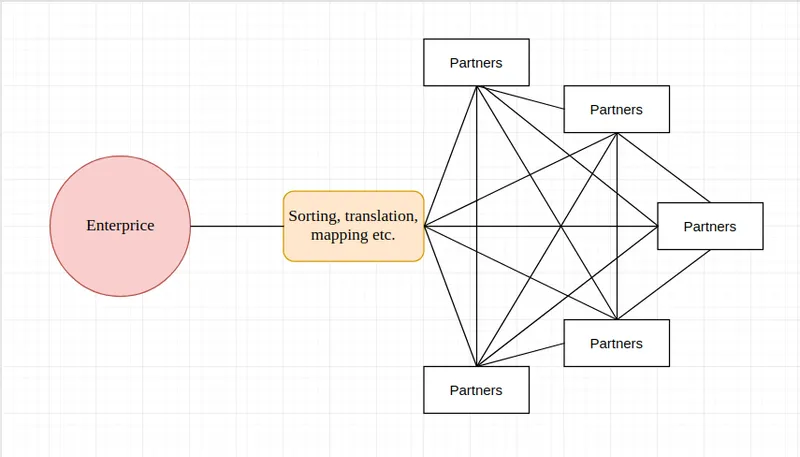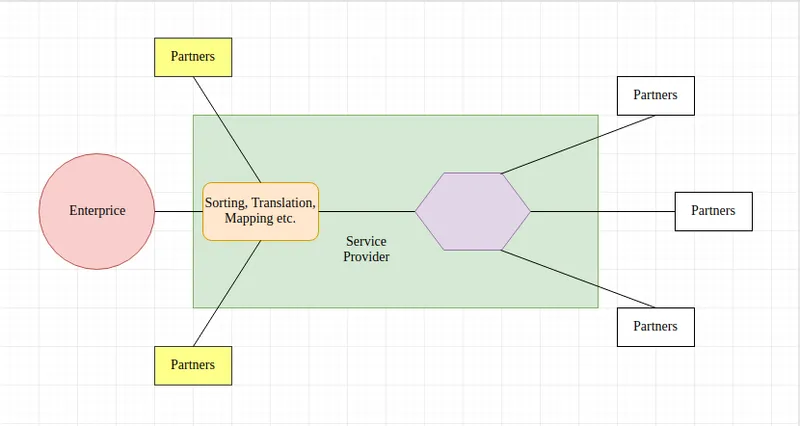

What are B2B models? How do they work?

It will be no surprise if you are not aware of the term “B2B” or “B2B models”. Though these are widely used models, the term may still sound new or lesser heard.
B2B simply means “Business to Business.”
B2B or Industrial marketing is when any kind of commercial transaction takes place between two entities that run their own business. E.g. if a Wholesaler sells products to a retailer, a manufacturer buys raw material from the supplier. It is known as a Business to Business transactions.
B2B transactions are simply a part of the supply chain, but may or may not be the final part. You may think that a B2C and B2B model is similar but they are different.
What is the model of a B2B online marketplace?

There are several people engaged when goods and services are bought or sold by companies in the B2B eCommerce model. The orders are given in bulk and generally placed via e-mails, online sales portal or through calling. These types of deals improve the performance of companies. There are many companies that cater to online B2B demands.
How is B2B different from B2C?
- In business to consumer model, the customer can buy anything at any time. The transaction is mostly not big or in bulk.
- It is totally clear that in a B2C transaction the products or services that are sold are for the end consumers. They are the finished products. And hence the decision of doing the transaction is taken by a single person because he is the customer.
- The consumer buys products or services and pays for it. That’s the end of the transnational relationship in the B2C model. The consumer may or may not perform another transaction. Even if the consumer decides to opt for the same company, it may be after a long time.
While in the B2B model, the relationships are long-term. Usually, they are contrast based. E.g. if any multi-vendor company has a deal with a shipping company, it is on contract. The contract can be for a year or even more. The company can also decide to renew or withdraw the contract after it expires. Hence the customer relationship is long-term.
- In B2C the consumer generally can’t bargain, especially if they are buying something online. It’s so because the units bought by the consumer is generally nominal.
Nominal purchases don’t benefit the dealers on a large scale. Hence they prefer not giving discounts applied for bulk sale. Secondly, there is no guarantee of customer retention even if the seller gives a discount.
While in B2B the dealer offers a discount as a token of maintaining a long-term relationship. Plus the dealer knows that the purchases will be made on a very large scale. It means he will be earning a bigger profit in just a single deal. Hence he offers a discount.
- The dealer focuses on speedy delivery in case of B2C model. The packages or the services are not a very big consignment. The strategy is to keep the consumers hooked to the same service provider. Speedy delivery is one of the main factors. Hence the service providers make it a priority to deliver as fast as they can.
While in B2B the consignment is big hence the dealer focuses on the punctuality of delivery. Which means that the delivery of the consignment should never happen after the promised date. It affects the goodwill of the dealer and the other party may cancel the contract.
How does B2B model work?
There are different types of B2B models and they operate in a slightly different manner from each other.
Unmediated Joint B2B model

As the diagram depicts this business model is quite complex This model works for small businesses. A big scale business will face difficulties to make this model work without any problem.
In this type of B2B model, the enterprise is directly connected to all the entities. The other entities or partners are interconnected with each other as well. Transfer of all electronic data is done through a single network.
In this kind of model, it is necessary for all the partners to agree on a single connectivity protocol. If other entities deal elsewhere as well then they might insist on using different networks. It will add to the complexity of the model.
Structured B2B model

It is a very clean model. All the entities have their individual network connections with a B2B service provider. The service provider is directly connected to the business enterprise as shown in the flow diagram. The partners can select any kind of network to connect to the service provider. It depends mostly on what kind of network suits their needs best.
The enterprise network is still responsible for data translation and mapping. The service provider audits the data, provides data security and back-up. Transaction fees are charged to each entity for the services.
Amalgam B2B model

It is a combination of unmediated joint and structured B2B model. The amalgam B2B model shows that the enterprise keeps a direct connection with some of its partners. These are the partners, with whom the enterprise does large-volume business. While all the other partners are handled by the B2B service providers. It helps to cut down the unnecessary service cost.
Outsourced B2B Model

The entire B2B business is outsourced to external service providers. They can be more than one in number. It happens when the demands are quite big and the main enterprise doesn’t have enough resources to fulfil it.
But they need to deliver the product or services within the decided time. It has a two-way benefit. The external service providers can earn by providing services and the goodwill of the enterprise is maintained.
It also saves a lot of time and money for the enterprise.
In years the B2B have gained a lot of potential. With the introduction of the internet, the B2B models have gone global. The companies have gained opportunities to trade overseas. It has made their business grow more than ever.
Business to business marketing has reached new heights in the era of networking. B2B ecommerce has given the ease to business entities in handling bigger deals. Due to internet B2B sale is growing rapidly even more than B2C (according to Trellis). We can say that B2B ecommerce has a good future in the years to come.





